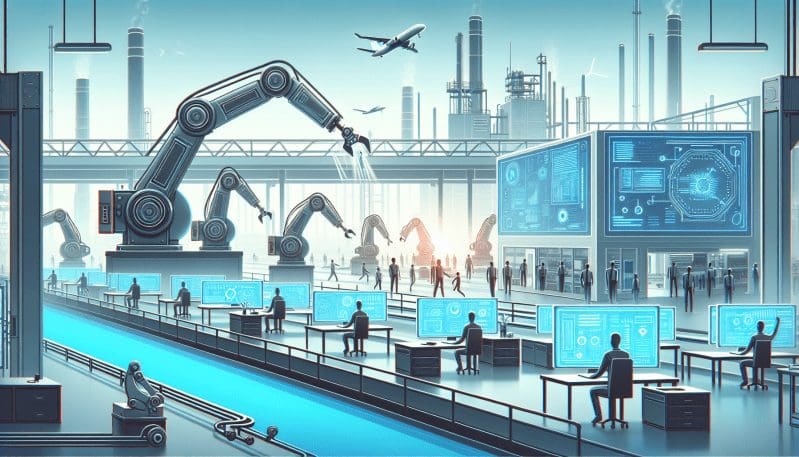Bridging the Skills Gap in the Age of Automation and AI: A Strategic Roadmap for the Future of Workforce Resilience
- Home
- Bridging the Skills Gap in the Age of Automation and AI: A Strategic Roadmap for the Future of Workforce Resilience

- Editors Desk
- January 11, 2024
- 0 Comments
In today’s rapidly evolving job market, the rise of automation and artificial intelligence (AI) is simultaneously a cause for excitement and concern. While these technological advances promise increased efficiency and the potential for new types of jobs, they also pose challenges to the current workforce. Many of the skills that workers possess today may not align with the demands of tomorrow’s job landscape. This dissonance is popularly known as the ‘skills gap.’
As we delve deeper into the Fourth Industrial Revolution, the conversation around work, workers, and workplaces has never been more critical. Traditional models of employment are being questioned, and the roles humans will play in a tech-driven future are under scrutiny. It is within this context that our initiative, ‘No Worker Left Behind,’ focuses on addressing the ramifications of this shift, particularly the skills gap, in a proactive and inclusive manner.
The skills gap is not a distant threat—it is an existing issue that requires urgent action. The World Economic Forum has already highlighted the massive scale of the challenge ahead, indicating that by 2025, half of all employees around the world will need re-skilling. However, there are pivotal areas that remain under-discussed and under-served, which is where our company steps in. Our mission is to shine a light on underrepresented industries, demographic groups, and workforce needs that are often overlooked in the broader dialogue.
To bridge this gap, there must be sustained collaboration between companies and governments. By sharing insights, resources, and strategies, we can develop comprehensive upskilling and re-skilling programs. No Worker Left Behind can play a strategic role by preemptively identifying sectors at risk due to automation and AI, and pinpointing the worker demographics most vulnerable to these changes.
One of our core strategies is the development of dynamic upskilling initiatives that are not only reactive but also predictive. Using advanced data analytics, we can forecast industry trends and identify future-skill requirements. This intelligence allows us to tailor educational programs that equip workers with the digital, technical, and cognitive skills they’ll need.
Moreover, fostering an environment that promotes lifelong learning is crucial. An adaptable and resilient workforce is one where learning new skills is an ongoing part of every career path. Businesses can invest in their employees through continuous training programs and opportunities for skill enhancement, ensuring workers remain competitive and valuable in the face of change. Government policies need to incentivize these practices, perhaps through tax incentives or direct subsidies for training.
Our vision goes beyond simply closing the current skills gap. We aim to create a workforce ecosystem that is inherently flexible and adaptable. No Worker Left Behind advocates for a future where transitions between jobs and careers are seamless, support structures for learning are robust, and no individual is disadvantaged by the relentless march of technological progress.
In conclusion, the age of automation and AI does not have to be a zero-sum game where technology’s gains are human labor’s losses. With concerted efforts by all stakeholders, we can convert challenges into opportunities for growth and empowerment. As we move forward, No Worker Left Behind remains committed to ensuring every worker is equipped with the skills and confidence to thrive in the future of work. Together, we can build a resilient, inclusive, and prosperous workforce that leaves no one behind in the digital age.

Leave A Comment